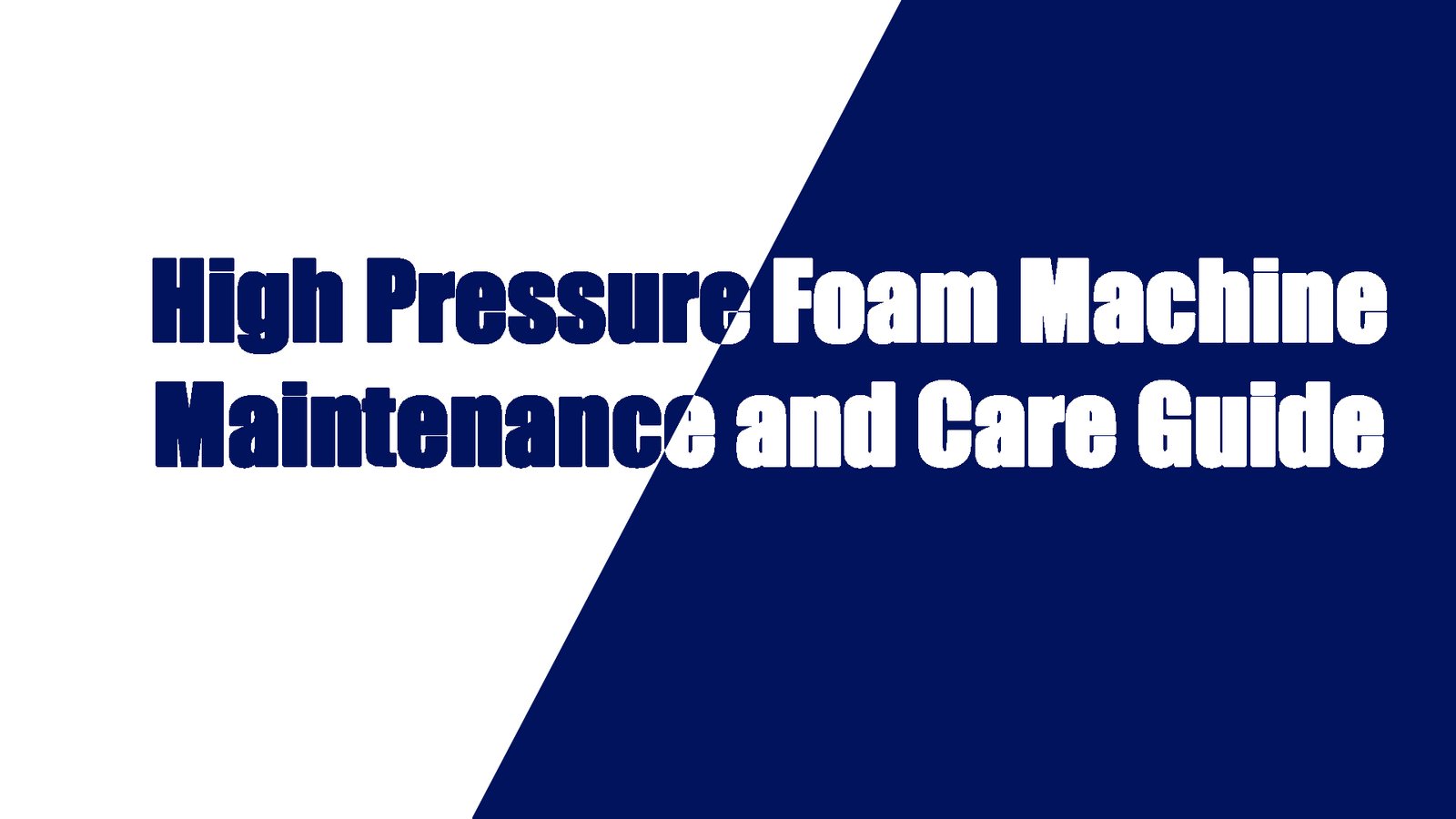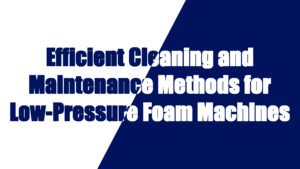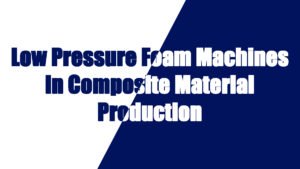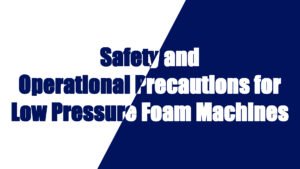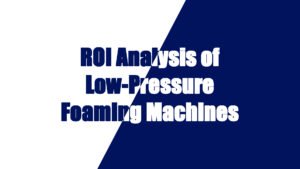High-pressure polyurethane foam machines are crucial industrial equipment used in a wide range of applications, including isolation, automotive, et conditionnement. To ensure long-term stable operation, improve production efficiency, reduce failure rates, and extend the service life of the equipment, daily maintenance and care are essential. This guide will detail the common maintenance steps for high-pressure machines, with a focus on preventive maintenance to avoid production disruptions.
Regular Inspection and Cleaning of the Piping System
The piping system in a high-pressure foam machine is critical for ensuring smooth material flow. Over time, residual materials may accumulate inside the pipes or harden due to high temperatures, which can affect the machine’s performance, leading to blockages and other issues. Regular inspection and cleaning of the piping system should be a top priority in maintenance.
Cleaning Steps:
- Turn off the machine and disconnect the power.
- Use specialized cleaning fluids or solvents, diluted according to the manufacturer’s recommendations.
- Open the cleaning valves and allow the cleaning fluid to flow through the pipes until all residues are removed.
- Clean both the inside and outside of the pipes thoroughly and check for cracks or deformation to ensure the pipes are not damaged.
- Finally, rinse the pipes with clean water to ensure no cleaning solution residue remains.
Maintenance Tips:
- For high-viscosity or fast-curing materials, increase the cleaning frequency to prevent blockages.
- When cleaning, always check the pipe seals for leaks or wear, ensuring their effectiveness.
Inspect Seals and O-rings
Seals and O-rings are crucial components in high-pressure pu foam machines, as they prevent material leakage and ensure the sealing integrity of the high-pressure system. Over time, these seals may degrade, age, or fail due to high pressure. Regular inspection and maintenance of these components are necessary to maintain optimal equipment performance.
Inspection Steps:
- Check the appearance of seals and O-rings monthly for signs of cracks, aging, hardening, or deformation.
- Replace worn or damaged seals immediately to prevent leakage during production.
- Apply appropriate lubricants to the seals to reduce friction and extend their service life.
Maintenance Tips:
- Always use original, compatible parts from the manufacturer to ensure effective sealing.
- Be cautious when cleaning sealing areas to avoid contaminants that may impact the sealing efficiency.
Lubrication and Oil System Check
The lubrication system in a pu high-pressure foam machine drives various moving parts, so it is vital for maintaining smooth operation. Insufficient lubrication or failure in the oil system can lead to overheating, excessive wear, and even serious mechanical breakdowns.
Lubrication Steps:
- Check the oil level in the reservoir regularly to ensure there is sufficient oil.
- Replace the lubricating oil periodically, especially when it becomes dirty or contains sediment.
- Inspect the oil lines for leaks and ensure all connections are tightly sealed.
- Check the oil pump and filter for proper operation to avoid blockages or malfunctions.
Maintenance Tips:
- Always use the proper lubricating oil as per the manufacturer’s recommendations to avoid over-lubrication or under-lubrication.
- Clean the oil lines and filters regularly to ensure smooth flow and efficient operation.
Inspect and Adjust the Pressure System
The pressure system in a high-pressure machine is responsible for compressing materials and sending them into the mixing head for foaming. Therefore, the state of the pressure system directly affects foam quality and machine stability. Regular inspection and adjustment of the pressure system are crucial for maintaining precise operation.
Inspection Steps:
- Regularly check the pressure gauges to ensure the machine operates within the recommended pressure range.
- Inspect the pressure control valves to ensure they are functioning correctly and respond to adjustments.
- Examine the high-pressure pump for any oil leakage or unusual vibrations.
- If the equipment allows for pressure adjustments, regularly recalibrate the pressure settings to ensure accuracy.
Maintenance Tips:
- If pressure fluctuations occur, stop the machine and check the pressure system to avoid potential damage.
- High-pressure pumps require professional maintenance to avoid damage from improper handling.
Preventive Maintenance and Periodic Testing
Preventive maintenance not only extends the life of the equipment but also significantly reduces the likelihood of unexpected failures. Periodic checks and testing help identify potential issues early on and allow for timely corrective actions, preventing production interruptions.
Preventive Maintenance Measures:
- Perform routine checks as per the manufacturer’s guidelines, including testing key components and electrical systems.
- Periodically run load tests to ensure the machine can handle different operational conditions.
- Maintain a maintenance log that records all service activities, repairs, and part replacements to track equipment performance over time.
Maintenance Tips:
- Establish a reasonable maintenance cycle to prevent both excessive and insufficient maintenance.
- Pay special attention to critical components like the electrical system and high-pressure pump, monitoring their condition regularly.
Regular Staff Training
The expertise of the operators directly affects the machine’s efficiency and safety. Regular training on proper operation and maintenance is essential to ensure the equipment is run efficiently and safely.
Training Content:
- Basic machine operation and maintenance knowledge, including correct procedures and common troubleshooting steps.
- Safety operating protocols, especially when handling the high-pressure system.
- Emergency fault handling and repair techniques to ensure operators can deal with common issues.
Maintenance Tips:
- Periodically assess the skill level of operators and provide advanced training as necessary
- Help operators understand the machine’s working principles and common issues, so they are better equipped to troubleshoot and resolve problems independently.
Regular maintenance and care of high-pressure foam machines are essential to ensure long-term reliable operation, minimize downtime, and extend the service life of the equipment. By routinely inspecting the piping system, seals, lubrication system, and pressure system, and addressing potential issues early, companies can significantly reduce the risk of equipment failure. Furthermore, preventive maintenance and ongoing staff training will help ensure smooth production operations. By following the manufacturer’s guidelines and developing a customized maintenance plan based on specific production needs, businesses can improve equipment performance, minimize costs, and maintain a high level of production efficiency.


















